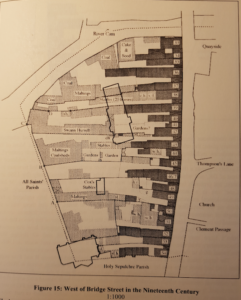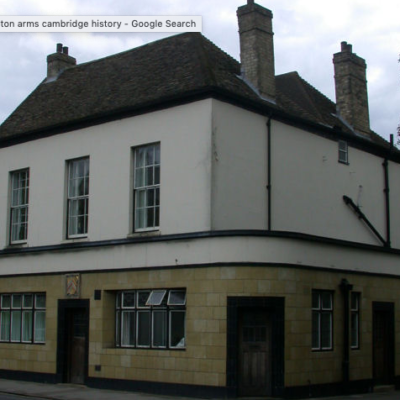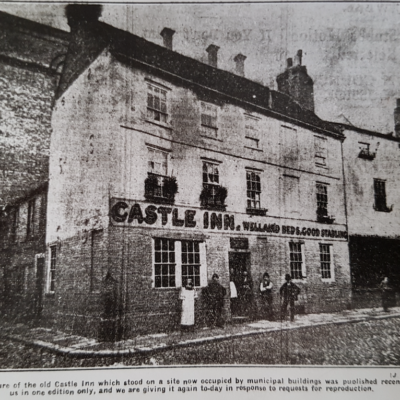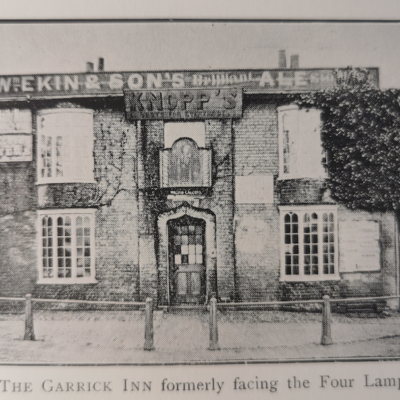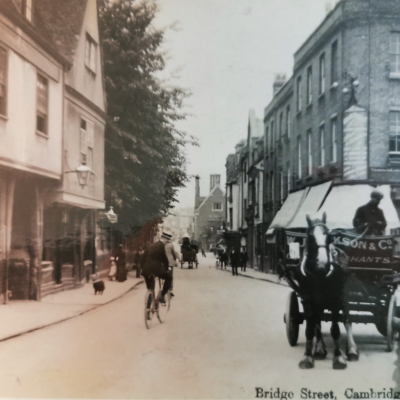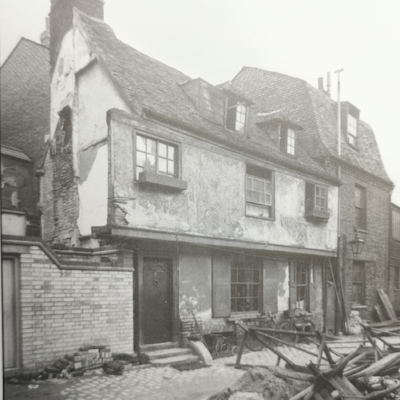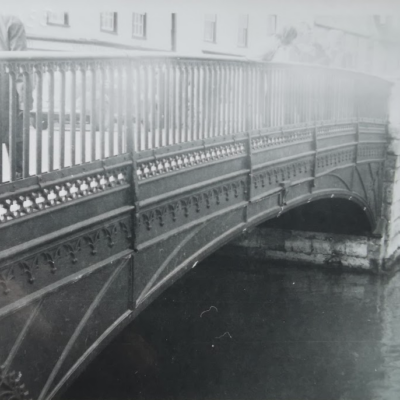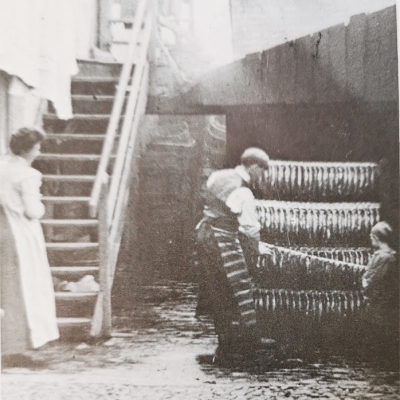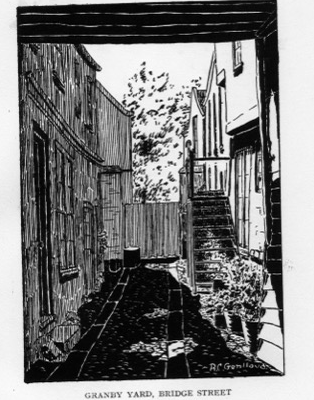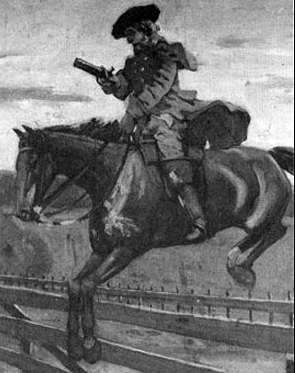Search by topic
- archaeology
- Building of Local Interest
- chapel
- charity
- church
- crime
- dressmaker
- fire
- Great Eastern Railway
- Listed building
- Mapping Relief
- medieval
- oral history
- poverty
- Public House
- Religious House
- Roman
- scholar
- school
- Then and Now
- tudor
- women
- work
- world war one
- world war two
Search by text
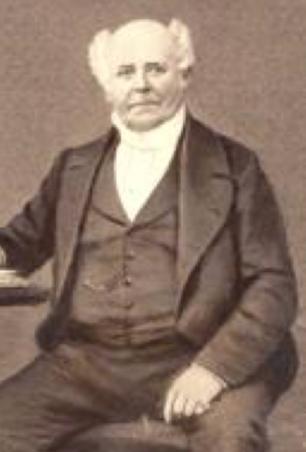 Mayor William Warren
Mayor William Warren51 Bridge Street, Saracen’s Head
History of 51 Bridge Street
bef. 1485: Thomas Cross
1485 sold to sitting tenant Hugh Cley
1491 – 1525 William Stevenson, lawyer, died. Paid rent of 4s to St John’s Hospital.
1526-37 quit rent paid by churchwardens of St Clement’s.
1557 Sunday, 3 January 1557. The Falcon Inn, Petty Cury, Cambridge. Despite the plague, which is ravaging Cambridge yet again, crowds cannot resist a play. Last Friday, a clear but chill New Year’s Day, Trinity College provided an outdoor show in its court. Today, warmer though still overcast, a troupe of professional players has come to Cambridge – indeed possibly two troupes, for one play is to be performed at the Falcon, close to the Guildhall, another about half a mile distant, near the main bridge, at the Saracen’s Head. (A H Nelson, Early Cambridge Theatres)
According to Nelson, no [drama] performances apart from two of 1557 and certainly no performances before royalty are capable of being documented for the Falcon, and no performances at all before modern times for the only surviving Cambridge galleries inn, the Eagle. The two performances at the Falcon are nevertheless twice as many as can be documented for three other Cambridge inns: the Saracen’s Head (3/1/1557), … the Elephant (27.2.1596); and the Bear (28.5.1600). We know, however that professional players visited Cambridge with some regularity into the 1590s, though their place of performance is scarcely ever recorded.
1538-1576 paid by John Glass or his widow. Glasses seemed to have used the property as a lodging house for members of Clement Hostel.
after 1576: Roger Slegg
c.1606: William Elsden, maltster, bequeathes his mansion house (No.52) and associated buildings to his son James
1635-39 Amos Smith brewer, previously tenant of James Elsden, occupying no.52
1649/50 ancient quit-rent of 4s attributed in St John’s rental for this year to ‘Edward Trott. lately Elsdon … for Saracen’s Head.’
1672-74 not listed in Victualler’s Book
1675 ‘sometime called the Sarazen’s Head’
c.1700: James Barnes II, victualler, probably at this location called then the ‘Vine’. Widow Hannah held victualler licence 1729-1730.
1724 James Barnes bequeathes alehouse in St Clement’s with brewhouse attached
1729-30 Hannah Barnes, widow, in no.52
1750-67 Thomas Harrington for Vine in 1752 and subsequent years
1768 not listed
1769-81 Robert taylor for Vine
1782- not listed
1850 William Warren, mayor
1881
George Warren, 40, senior partner grocery firm 17 men and 5 boys, b Cambridge
On 8 January 1880 Josiah recorded:
The great baking powder case came on today and the Corporation lost it.
George and Edward Warren who owned grocery shops on Market Hill and in Bridge Street, were accused by the Improvement Commissioners – the Urban Sanitary Authority – of selling baking powder, ‘ Norfolk Baking Powder,’ which was adulterated with harmful alum. Initially they were convicted by magistrates but the case went to appeal. The case rested on whether the ground rice and the soda in the baking powder could be considered as foods, since the powder was not itself a food. A doctor from Addenbrookes argued that alum would prevent the uptake of soluble phosphate which over time would cause indigestion. Other medical experts denied this and the conviction was quashed by the Recorder.
Cambridge Independent Press 10 January 1880:
The court sat eleven o’clock yesterday morning for the purpose hearing an appeal in which George Warren and Edward Warren, grocers, of this town, were the appellants, and Henry Philips, inspector provisions for the corporation, was the respondent. It will be remembered that on the 20th November, the appellants were summoned before the magistrates on the charge of selling baking powder adulterated with an ingredient injurious to health, namely alum, and, after a lengthy inquiry, which lasted about four hours and a half, the defendants were convicted, the Bench imposing a penalty of 60s and costs. Notice of appeal was then given, and on Friday the appellants were represented by Mr. T. C. Blofeld and Mr. Horace Browne (instructed Mr. G. B. Kennett); Mr. W, Cockerell and Mr. E. Turner (instructed by Edmond Foster, town clerk) representing the respondent.
The appellants were practically Messrs. Smith and Sons. Norwich, the manufacturers of the “Norfolk Baking Powder.”
Mr. W. Cockerell, in his opening address, said it was admitted that nearly one-third of the baking powder consisted of crystalised potash of alum, and his contention was that this constituent was injurious by rendering food indigestible by hardening the gluten. It was necessary that human beings should receive a certain amount of phosphoric acid per day— say about 50 grains—and to a great extent that was derived from bread. The contention on the part of the manufacturers was that the powder was not an article of food; therefore it did not come under the Act; and further, that if it was, the deleterious effect of the alum was neutralized in the process of making.
The Recorder said Mr. Cockerell would first have to show that bicarbonate of soda and ground rice, the other compounds of the powder, were articles of food.
Mr. Cockerell contended that the baking powder was an article of food, and that alum was no necessary part of it.
After some further discussion, the case was proceeded with by Mr. Cockerell calling the witnesses for the prosecution.
Evidence was then given for the prosecution by Mr. J. West Knights, Mr. M. M. Muir, Dr. Bradbury, Dr. Paget and Mr. Bushell Anningson. The scientific evidence went to establish the fact that the alum in the baking powder was injurious to health. In the process of mixing and baking, the phosphoric acid in the flour combined with the alum to form phosphate of alumina, and a small quantity of hydrate of alumina. Both these products were more or less injurious.
Mr. Blofeld addressed the court on behalf of the appellant, contending that he should prove that the powder contained nothing which, when used as an article of food, would be injurious to health.
After hearing witnesses for the defence, the Recorder said it was clear that it was not an article injurious. and therefore he could not uphold the decision of the magistrates.
1911
Agnes Rachael Crohill, head, 63, university lodging house keeper, b Fulbourn
Thomas, husband, 64, assists in house, b Ireland
Harold Leton, 22, showroom attendant gas company, b Cambridge
1913
R H Baynes, grocer & provision dealer, specialist in English honey
William Bradford, lodging house keeper
F W Bryan
Contribute
Do you have any information about the people or places in this article? If so, then please let us know using the Contact page or by emailing capturingcambridge@
License
This work is licensed under CC BY-NC-SA 4.0





